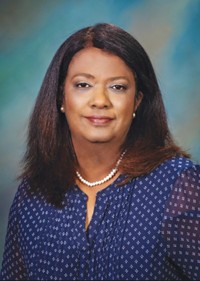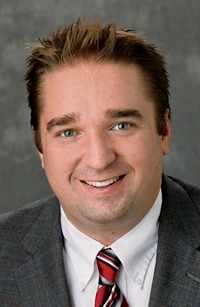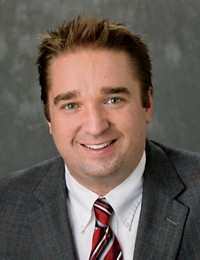Advertisement
Grab your lab coat. Let's get started
Welcome!
Welcome!
Create an account below to get 6 C&EN articles per month, receive newsletters and more - all free.
It seems this is your first time logging in online. Please enter the following information to continue.
As an ACS member you automatically get access to this site. All we need is few more details to create your reading experience.
Not you? Sign in with a different account.
Not you? Sign in with a different account.
ERROR 1
ERROR 1
ERROR 2
ERROR 2
ERROR 2
ERROR 2
ERROR 2
Password and Confirm password must match.
If you have an ACS member number, please enter it here so we can link this account to your membership. (optional)
ERROR 2
ACS values your privacy. By submitting your information, you are gaining access to C&EN and subscribing to our weekly newsletter. We use the information you provide to make your reading experience better, and we will never sell your data to third party members.
Careers
Give Till It Hurts
by Thomas H. Lane
November 2, 2009
| A version of this story appeared in
Volume 87, Issue 44
Proud to be a chemist! This is more than just a phrase that has resonated with me throughout my presidential year; it is a core belief that reflects the indispensable role of chemistry in helping people. Chemistry connects us in many ways, and each connection can make a difference.
I have connected through the ACS Network and Facebook with students who have contacted me to ask about next steps in their careers or which courses they should take to prepare for their entry into the field. In this month’s “Rxn’s and Sln’s” feature in the ACS magazine inChemistry, recent graduates were asked to write about the career paths they chose after earning bachelor’s degrees in the chemical sciences. ACS member and Project SEED alumna Alexandra Severino highlighted her journey from research scientist to high school chemistry teacher:
“After graduating with a B.A. in chemistry I was unsure about my next step and decided to work for Merck until I figured it out. … I joined the Basic Research department at Merck two weeks after my graduation. After two years at Merck and some soul searching I decided to give teaching a try. … My job as a teacher in an urban school district is similar to my job as a scientist. Instead of running experiments in the lab, I run them in my classroom; instead of using chemicals I have students. My problem is not to discover novel molecules, it is to find creative ways to help students understand and appreciate chemistry. Being a teacher can be as challenging as being a research scientist, and equally as rewarding.”
I applaud Alexandra and the more than 30,000 high school chemistry teachers in the U.S. We need to value teaching as a profession. We should be encouraging our brightest students to pursue teaching careers at the K–12 level. Teachers influence thousands of students throughout their lifetimes. Shouldn’t we promote teaching as a viable career option for our most talented students? Some students are simply waiting to be asked. A number of universities have instituted vigorous teacher recruitment programs, encouraging undergraduates to consider teaching as their vocation and providing opportunities for students to explore K–12 teaching.
Alexandra encourages her students to experiment and learn through experience the way she did with the Project SEED program. Since 1968, more than 9,000 students have benefited from Project SEED. This past summer’s program reached more than 400 students in 38 states. Our goal is to connect Project SEED to students in all 50 states by the International Year of Chemistry in 2011.
Cultivating potential is an important ingredient in developing the next generation of scientists. Now entering its 15th year, the ACS Scholars Program has provided college scholarships to more than 2,274 minority students in the chemical sciences. These young people are hungry to learn all they can about chemistry, and we need to feed that desire. One scholarship winner exclaimed, “I can’t wait for the new semester to begin—I get to take my first class in organic chemistry!” This young woman exemplifies the success of the undergraduates who have been supported by this program. The number of ACS Scholars is growing in the ranks of our chemical workforce. Of the 986 confirmed graduates to date, our tracking data indicate that 377 went directly to work in the chemical industry after receiving bachelor’s degrees, and the balance of alumni continued on to graduate school. To date, nine former ACS Scholars are faculty members in chemistry departments across the country, and 62 have earned Ph.D.s, with 187 more in the pipeline in doctoral programs.
I had the pleasure of meeting an extraordinary group of graduate students and postdoctoral scholars at the Summer School on Green Chemistry & Sustainable Energy at the Colorado School of Mines in July. The students hailed from the U.S., Canada, and Latin America. Geographic borders were invisible on the dance floor, in the lab, and on the soccer field. These talented students hold the key to a sustainable future in developing sources of renewable energy, designing new materials, and promoting green chemistry education. One student noted that the best thing about the summer school was “the camaraderie and making new friends that feel the same as I do about sustainability. The speakers were all very knowledgeable, and I learned something new every day.”
As chemists, we have an opportunity that extends beyond our individual ability to practice science—we can help develop human potential. We can be active philanthropists, connecting with students and teachers through our support of ACS programs with an annual gift. Your gift at year-end, whether it’s for green chemistry education and outreach, scholarships for deserving Project SEED students or ACS Scholars, or resources that support science teachers through professional development workshops, will reinforce ACS’s commitment to “improving people’s lives through the transforming power of chemistry.”






Join the conversation
Contact the reporter
Submit a Letter to the Editor for publication
Engage with us on Twitter